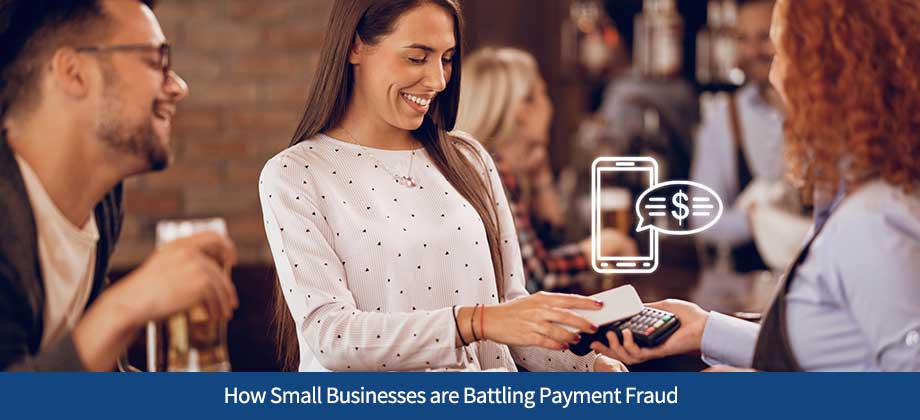How Small Businesses are Battling Payment Fraud

Payment fraud is one of those silent threats lurking around every corner of the business world. For small business owners, this menace can be particularly daunting, threatening to undermine hard-earned profits and business reputation. This post dives deep into how small business owners are dealing with payment fraud and offers practical strategies to safeguard against it.
Understanding Payment Fraud in Small Businesses
Payment fraud involves unauthorized transactions that result in financial loss. For small businesses, such incidents can be catastrophic, draining resources, and damaging customer trust. Understanding the various types of payment fraud is the first step towards prevention.
Types of Payment Fraud
There are several forms of payment fraud:
- Credit Card Fraud:
Unauthorized use of a credit card to make purchases.
- Chargeback Fraud:
False claims from customers requesting refunds after receiving goods or services.
- Invoice Fraud:
Fraudulent invoices sent to businesses, tricking them into paying for services or products never delivered.
- Phishing Scams:
Fraudulent messages designed to steal sensitive payment information.
The Impact on Small Businesses
Payment fraud can lead to significant financial losses. Small businesses, often operating with tight margins, may find it challenging to absorb these costs. Additionally, the reputational damage caused by fraud can erode customer trust, making it harder to retain and attract new clients.
Statistics Highlighting the Threat
Recent studies indicate that small businesses are increasingly targeted:
- According to the Association of Certified Fraud Examiners, small businesses face a median loss of $150,000 per fraud scheme.
- A report from the National Cyber Security Alliance found that 60% of small businesses close within six months following a cyber attack.
Common Tactics Used by Fraudsters
Understanding the methods used by fraudsters can help small business owners recognize and counteract potential threats.
Social Engineering
Fraudsters often manipulate individuals to divulge confidential information. They may pose as trusted entities, such as banks or government officials, to gain access to payment details.
Malware Attacks
Malicious software can infiltrate systems to steal sensitive information. This can include keyloggers that record keystrokes or ransomware that locks files until a ransom is paid.
Skimming Devices
These devices are used to capture payment information during transactions. Skimming can occur at point-of-sale terminals, ATMs, or any payment processing hardware.
Practical Steps to Prevent Payment Fraud
Prevention is the best defense against payment fraud. By implementing robust security measures, small business owners can significantly reduce their risk.
Implementing Strong Password Policies
Ensure that all employees use complex passwords and change them regularly. Encourage the use of multi-factor authentication for added security.
Educating Employees
Training staff to recognize phishing attempts and other fraudulent activities is crucial. Regular workshops and updates on the latest fraud tactics can keep everyone vigilant.
Securing Payment Systems
Invest in secure payment processing systems. Ensure that all transactions are encrypted and that payment terminals are regularly inspected for tampering.
Leveraging Technology for Fraud Detection
Technological advancements have made it easier for small businesses to detect and prevent fraud.
AI-Powered Fraud Detection Tools
Artificial intelligence can analyze transaction patterns and flag suspicious activities. Tools like these can provide real-time alerts, allowing businesses to act swiftly.
Secure Payment Gateways
Using reputable payment gateways that offer built-in fraud detection and prevention features can add an extra layer of security.
Regular System Audits
Conduct regular audits of your payment systems to identify and rectify vulnerabilities. This proactive approach can prevent potential breaches before they occur.
Building a Fraud-Resilient Culture
Creating a culture of vigilance and accountability within your business can further mitigate the risk of payment fraud.
Encouraging Open Communication
Foster an environment where employees feel comfortable reporting suspicious activities without fear of repercussions. This can lead to early detection and prevention of fraud.
Setting Up a Response Plan
Having a clear action plan in place for responding to fraud incidents can minimize damage. Ensure that all employees are aware of the steps to take in the event of a breach.
Partnering with Financial Institutions
Work closely with your bank and payment processors. They can provide valuable insights and support in detecting and preventing fraud.
The Role of Industry Standards and Compliance
Adhering to industry standards and compliance requirements can further strengthen your defense against payment fraud.
PCI-DSS Compliance
Ensure that your payment processing systems comply with the Payment Card Industry Data Security Standard (PCI-DSS). This set of security standards is designed to protect card information during and after a transaction.
Regular Compliance Audits
Conduct regular audits to ensure ongoing compliance with industry standards. This proactive approach can help identify and rectify potential vulnerabilities.
Staying Updated with Regulations
Keep abreast of changes in regulations and industry standards. Regular updates and training can ensure that your business remains compliant and secure.
The Future of Payment Fraud Prevention
As technology evolves, so do the methods used by fraudsters. Staying ahead of the curve is essential for small business owners.
Emerging Technologies
New technologies, such as blockchain and biometric authentication, show promise in enhancing payment security. Exploring and adopting these innovations can provide additional layers of protection.
Collaboration and Information Sharing
Collaborating with other businesses and sharing information on fraud tactics can create a united front against fraudsters. Industry associations and online forums can be valuable resources for staying informed.
Continuous Improvement
Regularly review and update your fraud prevention strategies. Staying proactive and adaptable can ensure that your business remains resilient against evolving threats.
Conclusion
Payment fraud is a significant challenge for small business owners, but it’s not insurmountable. By understanding the threat, implementing robust security measures, leveraging technology, and fostering a culture of vigilance, you can protect your business and build trust with your customers.
Your privacy is important to us. ARF Financial will never sell or rent your information to any third party. Click here for more information about our privacy policy. Image by Drazen Zigic

